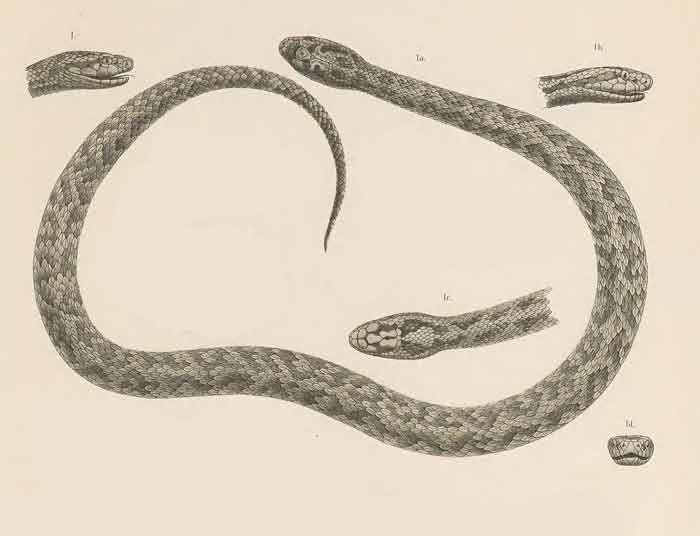
Superregnum: Eukaryota
Cladus: Unikonta
Cladus: Opisthokonta
Cladus: Holozoa
Regnum: Animalia
Subregnum: Eumetazoa
Cladus: Bilateria
Cladus: Nephrozoa
Superphylum: Deuterostomia
Phylum: Chordata
Subphylum: Vertebrata
Infraphylum: Gnathostomata
Megaclassis: Osteichthyes
Cladus: Sarcopterygii
Cladus: Rhipidistia
Cladus: Tetrapodomorpha
Cladus: Eotetrapodiformes
Cladus: Elpistostegalia
Superclassis: Tetrapoda
Cladus: Reptiliomorpha
Cladus: Amniota
Classis: Reptilia
Cladus: Eureptilia
Cladus: Romeriida
Subclassis: Diapsida
Cladus: Sauria
Infraclassis: Lepidosauromorpha
Superordo: Lepidosauria
Ordo: Squamata
Cladus: Unidentata, Episquamata
Cladus: Toxicofera
Subordo: Serpentes
Infraordo: Caenophidia
Superfamilia: Viperoidea
Familia: Viperidae
Subfamilia: Crotalinae
Genus: Gloydius
Species: Gloydius strauchi
Name
Gloydius strauchi (Bedriaga, 1912)
References
Links
Uetz, P. & Hallermann, J. 2024. Gloydius strauchi. The Reptile Database. Accessed on 8 October 2021.
Vernacular names
English: Strauch's Pitviper
Gloydius strauchi is a species of venomous pit viper in the subfamily Crotalinae of the family Viperidae. The species is native to western China. It is a small snake with a pattern of four longitudinal stripes, although some older specimens may be a uniform black. G. strauchi may be distinguished from G. monticola by its higher midbody dorsal scale count. This species jointly holds the altitude record for pitvipers together with Crotalus triseriatus of Mexico, both being found even above the tree line at over 4,000 m (13,000 ft). No subspecies were recognized as being valid,[4] until a recent publication (Kai Wang et al., 2019) re-evaluated the taxonomic statuses of populations of G. strauchi and described the eastern Tibetan populations as a new species.[5]
Etymology
The specific name, strauchi, is in honor of Russian herpetologist Alexander Strauch.[6]
Description
According to Gloyd and Conant (1990), G. strauchi is a small snake, probably not growing to much more than 50 cm (19+5⁄8 in) in total length. The largest male they examined was 51 cm (20 in) in total length of which the tail was 7.3 cm (2+7⁄8 in), the largest female 54.7 cm (21+1⁄2 in) with a tail of 7.5 cm (3.0 in). The snout is rounded while the head is not too much wider than the neck. The body is moderately stout.[2]
Scalation usually includes 21 rows of keeled dorsal scales at midbody, although the keels on the outer scale rows may be missing; 145-175 ventral scales; and 34-44 paired subcaudal scales. Also there are usually 7 supralabial scales.[2]
The color pattern consists of a greenish brown, yellowish brown, or nut brown ground color, which is overlaid with four longitudinal stripes that are interrupted at intervals, sometimes curving and coalescing, and at other times forming an irregularly spotted or zigzag pattern. This pattern is clearly visible in young specimens, while older ones are dark or even uniformly black. A dark postocular stripe is present that more or less diffuses with the ground color above, but is clearly bordered below by a pale coloration of the lower temporal scales and posterior supralabial scales.[2]
Geographic range
G. strauchi is found in western China in the Tibetan Plateau in the provinces of Tsinghai and western Szechwan. The type locality given is "Dytschu, also den Oberlauf des Jan-tse-kiang... Tung-o-lo (Kamennoe Nagorie) und Daudsen-lu (Szytschuan)". Zhao & Adler (1993) give "Dytschu (= Moron Us and Tuotuo rivers?), upper Jan-tse-kiang (= Jinsha River, or upper Chang Jiang), Qinghai Prov., Tung-o-lo (= Dong-e-lo) and Daudsen-lu (or Ta-tsian-lu, = Kangding Co.), Sichuan Prov., China". Pope (1935) "restricted" the type locality to "Tungngolo" (located between Lit'ang and K'angting, Hsikang, China).[1]
The elevational range is 2,886–4,267 m (9,469–13,999 ft),[2] even being found above the tree line. It jointly holds the altitude record for pitvipers together with Crotalus triseriatus in Mexico.[7]
References
McDiarmid RW, Campbell JA, Touré TA (1999). Snake Species of the World: A Taxonomic and Geographic Reference, Volume 1. Washington, District of Columbia: Herpetologists' League. 511 pp. ISBN 1-893777-00-6 (series). ISBN 1-893777-01-4 (volume).
Gloyd HK, Conant R (1990). Snakes of the Agkistrodon Complex: A Monographic Review. Society for the Study of Amphibians and Reptiles. 614 pp. 52 plates. LCCN 89-50342. ISBN 0-916984-20-6.
Gumprecht A, Tillack F, Orlov NL, Captain A, Ryabov S (2004). Asian Pitvipers. First Edition. Berlin: GeitjeBooks. 368 pp. ISBN 3-937975-00-4.
"Gloydius strauchi". Integrated Taxonomic Information System. Retrieved 9 August 2008.
Wang, Kai; Ren, Jinlong; Dong, Wenjie; Jiang, Ke; Shi, Jingsong; Siler, Cameron D.; Che, Jing (September 2019). "A New Species of Plateau Pit Viper (Reptilia: Serpentes: Gloydius) from the Upper Lancang (=Mekong) Valley in the Hengduan Mountain Region, Tibet, China". Journal of Herpetology. 53 (3): 224–236. doi:10.1670/18-126. ISSN 0022-1511. S2CID 203409473.
Beolens, Bo; Watkins, Michael; Grayson, Michael (2011). The Eponym Dictionary of Reptiles. Baltimore: Johns Hopkins University Press. xiii + 296 pp. ISBN 978-1-4214-0135-5. (Gloydius strauchi, p. 256).
Campbell JA, Lamar WW (2004). The Venomous Reptiles of the Western Hemisphere. 2 volumes. Ithaca and London: Comstock Publishing Associates. 870 pp. 1,500 plates. ISBN 0-8014-4141-2.
Retrieved from "http://en.wikipedia.org/"
All text is available under the terms of the GNU Free Documentation License

